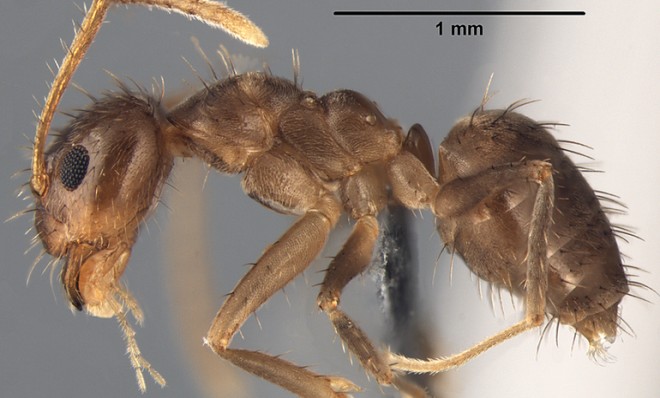'Crazy ants' invade the U.S. Southeast: What you should know
New research says Rasberry crazy ants are displacing established populations of fire ants all over the Gulf Coast

Aside from their nasty sting, fire ants are a relatively docile bunch. They'll leave you alone as long as you keep an eye out for their mounds. But a new, and possibly more treacherous threat is mounting in the form of invasive "crazy ants," which are beginning to displace fire ant populations from Texas all the way east to Florida, notes Douglas Main at LiveScience. Here's what you should know about America's newest pest menace:
Where did these crazy ants come from?
Populations of the Rasberry crazy ant (Nylanderia fulva) originally started popping up in Houston back in 2002. Since then they've spread to all the states bordering the Gulf Coast. According to LiveScience's Main, the ants' "crazy" moniker was derived from their "quick, seemingly random movements." While the bugs do indeed sting, crazy ants' bites are less painful than those of fire ants. But that's not even the main problem...
The Week
Escape your echo chamber. Get the facts behind the news, plus analysis from multiple perspectives.

Sign up for The Week's Free Newsletters
From our morning news briefing to a weekly Good News Newsletter, get the best of The Week delivered directly to your inbox.
From our morning news briefing to a weekly Good News Newsletter, get the best of The Week delivered directly to your inbox.
So what is?
Crazy ants, for reasons that are still unexplained, have a mysterious attraction to electrical equipment. They'll swarm a circuit and die of electrocution, giving off a chemical that, strangely, attracts more ants. The newly charred bodies pile up, causing the electronics to fizzle out shortly thereafter — a big problem for places like airports.
Back in 2008, Scott Solomon at Slate noted that "some ant species are capable of detecting electromagnetic fields and may even use Earth's magnetic field as a directional cue." Crazy ants' unmitigated attraction to electronics may be an evolutionary side effect. (See them in action below.)
Are the ants also a problem for places other than airports?
A free daily email with the biggest news stories of the day – and the best features from TheWeek.com
Yep. Crazy ants "go everywhere," says Edward LeBrun, a researcher at the University of Texas in Austin who led the study — into your home, walls, underneath flower pots... anywhere. LeBrun and his team, publishing their findings in the journal Biological Invasions, found that wherever populations of crazy ants appeared, fire ant nests dwindled, unable to compete with the sheer numbers of crazy ants.
How'd they get here in the first place?
The ants are believed to have come to the U.S. through the Port of New Orleans. The Los Angeles Times notes it's a familiar pattern: That's "how the Argentine ant got here in 1891; the black fire ant was first found near the port of Mobile, Ala., in 1918, and in the 1930s, the well-known and despised red fire ant showed up, pushing out the black fire and Argentine ants."
How do you get rid of them?
The stubborn ants themselves have no natural predators, which enables their colonies to balloon to 100 times the size of other local ant populations. Crazy ants also don't eat the normal pest control poisons used on fire ants, which means you'll have to call an exterminator to hopefully keep them in check. "There are videos on YouTube of people sweeping out dustpans full of these ants from their bathroom," LeBrun tells The Los Angeles Times. "You have to call pest control operators every three or four months just to keep the infestation under control. It's very expensive."
-
 Into the Woods: a ‘hypnotic’ production
Into the Woods: a ‘hypnotic’ productionThe Week Recommends Jordan Fein’s revival of the much-loved Stephen Sondheim musical is ‘sharp, propulsive and often very funny’
-
 ‘Let 2026 be a year of reckoning’
‘Let 2026 be a year of reckoning’Instant Opinion Opinion, comment and editorials of the day
-
 Why is Iran facing its biggest protests in years?
Why is Iran facing its biggest protests in years?TODAY’S BIG QUESTION Iranians are taking to the streets as a growing movement of civic unrest threatens a fragile stability